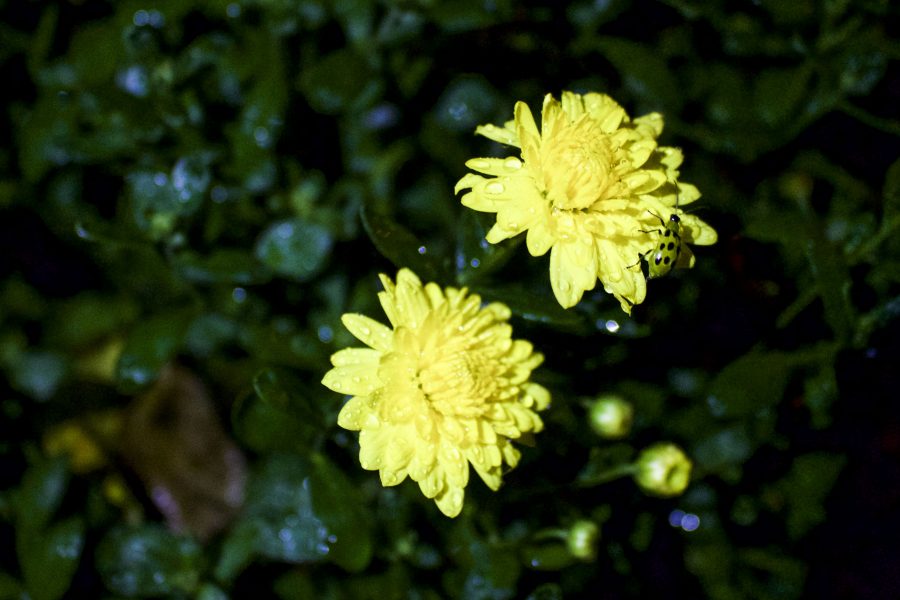Meet The Hundred-Year-Old Natives at NYU
Among the various gardens surrounding NYU’s campus, Willy’s Garden at One-Half Fifth Avenue decorates the entrance to NYU’s Graduate School of Arts and Science with native inkberries and decorative flowers.
October 31, 2016
Have you ever looked up from your tears and coffee long enough to notice the six trees standing outside Bobst? The plants in front of Bobst Library include Eastern Hemlock Amelanchier trees and are just two of the over 60 species of indigenous Manhattan trees on NYU’s campus. These trees carry a rich history that has been around since the formation of the borough.
More than 400 years ago, Manhattan was named “Mannahatta” by the native Lenape people. As the borough became a thriving metropolis, the landscape was also altered dramatically. Determined to bring back the indigenous plants, Dr. Eric W. Sanderson, a landscape ecologist, established the “Mannahatta Project” in 2009 and has planted many native Manhattan vegetations around the city. Here are some locations around campus where you can find these endemic plants.
715 Broadway: Tulip Trees
Located next to the Tisch School of the Arts and across from the NYU Bookstore, the windows of 715 Broadway feature an original map of Manhattan before European settlement and a short video about how the city’s landscape has changed. Muxulhemenshi, or tulip trees, overlay the background. The tulip trees were fashioned into the dugout canoes that the Lenape once used to meet, negotiate and trade along coastal rivers
and waters.
70 Washington Square S.: Eastern Hemlock and Autumn Brilliance
Tsuga canadensis, or Eastern Hemlocks, are the four native trees in front of Bobst Library. These conifers are evergreen trees, the state tree of Pennsylvania. The stem at the top of the trunk often droops, so the tree does not have the pointed tip typical of most trees in the pine family. The other two trees outside Bobst are called Amelanchier “Autumn Brilliance,” a small, deciduous-leaved tree in the Rose family.
NYU Native Woodland Garden: Ferns
The 2,200-square-foot garden is located on the east side of Bobst Library and was established in recognition of the 400th anniversary of Henry Hudson’s arrival at the New York Harbor. The garden includes a variety of species of trees, bushes and flowers. Several plants stay alive though the colder months, including the Christmas Fern (Polystichum acrostichoides), the New York Fern and small bushes like Wreath Goldenrod (Solidago caesia) and Flowering Spurge.
251 Mercer St. (Mercer Plaza): Sweetgum Trees and Willow Oaks
Native trees and oaks in Mercer Plaza include Sweetgum trees and Willow oaks. Sweetgum trees are recognizable because of their five-pointed, star-shaped leaves and their hard, spiked fruits, while Willow oaks are a prolific producer of acorns and a home for Manhattan’s squirrels.
Willy’s Garden at One-Half Fifth Avenue: Native Inkberry
Willy’s Garden is located at the entrance to NYU’s Graduate School of Arts and Science, where you can spot the native inkberry (Ilex glabra). The inkberry’s most distinctive features are its inconspicuous flowers and its blackberries, which persist well into the winter.
A version of this article appeared in the Monday, Oct. 31 print edition. Email Lily Li at [email protected].












































































































































